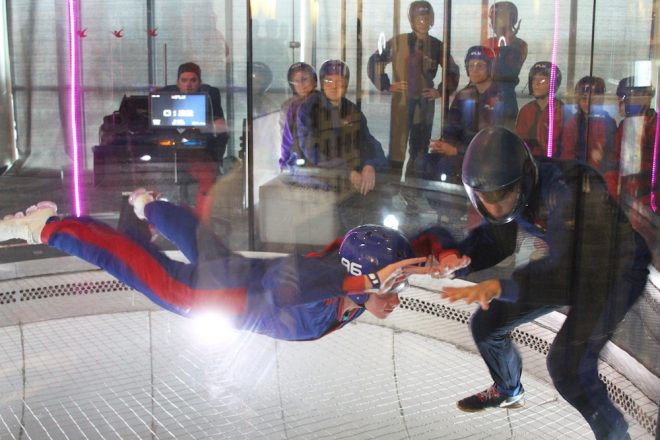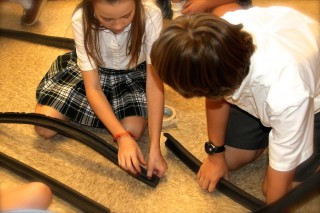ESD eighth graders recently had the opportunity to visit the indoor skydiving facility iFly for some learning in action.
The STEM (Science, Technology, Engineering, Math) Education program available at iFly directly correlates with the physics curriculum eighth graders are currently working on in science. The program started with an engineering talk about the history and science of making the indoor skydiving wind tunnel. The students were then challenged to find the surface area, frontal drag surface area, mass, and weight of objects to calculate their terminal velocities, drag, and friction coefficients, something they have been working on during their physics-related courses at school.
After the calculations were completed and predictions made, the objects were put into the indoor skydiving tube to see how accurate the students’ predictions were.
Not only did students calculate and observe the terminal velocity of objects, they also made calculations for their own terminal velocity. Once the predictions had been made, students were able to test out their predictions by stepping into the wind tunnel themselves, with an instructor, and experiencing firsthand how air flow and resistance truly affect an object’s velocity.
“In physics, students have been learning about drag, air resistance, terminal velocity, and freefall, all of the concepts that are illustrated here,” explains ESD’s eighth-grade science teacher, Scott Goetsch. “Seeing it in a video or calculating it in a classroom doesn’t really mean much, but when you actually step into the wind tunnel and experience for yourself, it puts all the physics we’ve learned into practice.”
The hands-on learning opportunity experienced by our eighth graders today provided invaluable insight, and demonstrates the importance of taking learning beyond the classroom.



